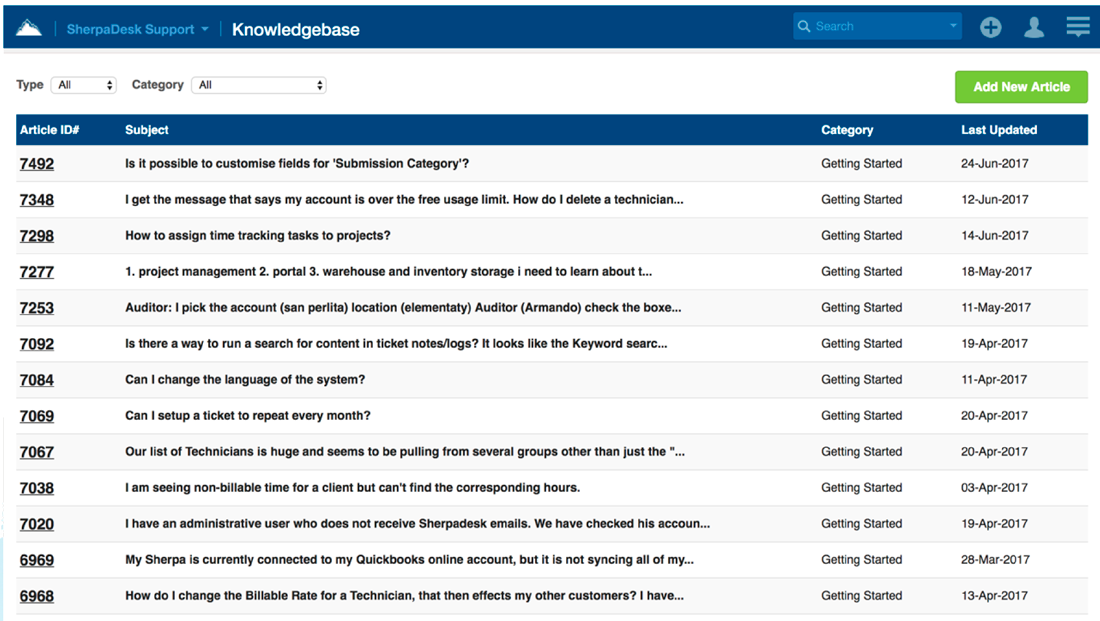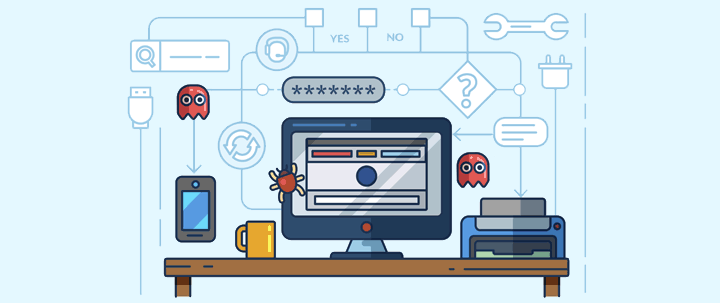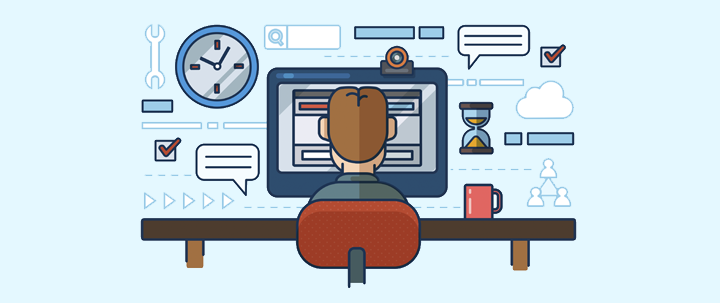As an MSP and IT help desk professional, you understand that customers may come to your business for a wide range of different reasons. But after you’ve been at the gig for a while, you’ll start to realize that some issues re-occur time and time again. This can become monotonous as some IT pros get tired of fixing the same problems over and over.
But for others, it’s refreshing. You’ve solved this issue 100 times and you know you’ll be able to solve it for this new customer with ease. In short, you know you’ll be able to give excellent customer service.
But what are the most common IT help desk issues? In this post, we’re going to look at the different types of requests or issues MSPs encounter most frequently and recommend some tools to make your job easier.
Issues That Stop Someone Doing Their Job
Occasionally someone will encounter an issue that prevents them from doing their job until the issue is fixed. People with these requests are usually the most adamant that you need to fix their issue right away (and rightly so) because if you don’t, they can’t do their jobs. In these situations, you’re most likely to encounter your most difficult customers - but not necessarily the most difficult problems.
The key is to communicate with the person making the request to assure them that you’re treating their request as a priority and that you’ll be working on it right away. In these instances, it’s important to make sure you also document how to fix every single issue.
These customers, rightfully, need their issue fixed as soon as possible. However, there are often times when all the help desk professionals on your team are busy or unable to solve the issue.
If you establish a culture of documenting everything, using up to date SOPs, what you will find is that you’ll be able to hand off work to anyone in your team who is available.

This way, even if one help desk pro is busy, the work can still be completed (to a high standard) by anyone else in the team, even if they’re not as technically proficient as the others.
A Bug
When you work in tech, it goes without saying that users will encounter bugs from time to time and who do they come to when they do? You, the tech support. The good thing about bugs is that finding them is the first step to fixing them. But people will start to become frustrated if they encounter the same bug time and time again. To best deal with bug issues, make sure that when a bug request comes through, your team doesn’t just fix the bug, but reports it to your entire technical team.
They will appreciate the fact you've informed them about the bug and what steps you took to fix it. That way if the bug appears again, the rest of your team will know how to resolve it. It's a good idea to have a recurring bug bible of sorts that is shared with your team as an internal knowledge base article.
Simple Issues
More often than you think, people will run into issues and instead of trying to work it out themselves, they’ll go straight to tech support. It could be something that you know is solved easily. In fact, they might also know it can be solved easily, but instead will come to you regardless.
In these instances, it’s a good idea to have your self-service documents or knowledge base articles packed full of information to help guide people on their way.

There could be times where the entire help desk team has plenty of time to deal with smaller, simple tasks. However, other times, due to heavy workloads, this just isn’t the case. Guiding your customers to the right document within the knowledge base is a good way to ensure they try and sort out their issues themselves.
Keep in mind, though, that you don’t want to come across like you’re trying to get out of helping your customers. It’s good practice to ensure that if they run into any issues implementing your ideas, they’re welcome to reach out to you again.
If the issue is as simple as you thought, they’re unlikely to reach out. Likewise, if they follow the steps in the knowledge base but still run into issues, it presents you with an opportunity to improve your knowledge base documentation ensuring others don’t fall into the same problems.
Uncertainty or Vagueness
IT pros know that the hardest IT helpdesk problems your customers will have are the ones of uncertainty or vagueness around what the actual problem is. In these cases, it’s important to get your communication right.
It could be that the user has just been vague with their description. When this is the case, be honest and ask them to explain it further if you’re unsure about anything. However, in some cases, these issues come across as vague or uncertain, simply because the user doesn't actually understand what their issue is.
If you want to excel as an IT help desk professional, it’s up to you to get to the bottom of your customer's recurring issues and work out exactly what's causing them and the best solution for a fix. Surprisingly, it mostly comes down to your tech team's ability to communicate effectively.
Here's a helpful list of questions to ask MSP customers to help troubleshoot any problems that seem confusing:
• Ask if anyone else is experiencing the problem
• Ask if they’ve encountered this problem before and if so, when?
• Ask if anything has changed as a result of the issue
• Ask whether they experience the same issue on other devices / computers / networks
• Ask what impact the issue has on them as an individual as well as them as a team
The answers to these questions will help your team decipher both the severity of your customer's issue as well as the actual problem itself.
Top Issues
Did you know that the top three help desk issues are?
• Printing issues • Password issues • Vague issues

Printing issues could be anything. Perhaps their printer is printing, but the text isn’t clear. Perhaps their printer isn’t printing at all or maybe their computer isn’t showing their printer as an option. If you regularly encounter many of these issues, see whether you can create documentation to help people self-solve their issues before coming to you. Likewise, if printer issues keep occurring, look into whether you last upgraded your printer and whether you need to update it to a newer model.
Second: Password issues. You already know the drill.
“I’ve forgotten my password”
“I’m putting my password in, but it still won’t let me log in”
For many IT pros, this request is a pain, simply because you already know there’s obviously a logical solution, like having caps lock on or missing out one letter.
Often you’ll have situations where there is an issue that will affect all your customers. It could be an outage, or the internet or network is slow (or worse - not working at all). Or it could be something entirely different. When this happens, the best thing to do (to cut down the number of requests and angry emails you receive) is to alert your customers of the issue before they alert you.
All you need to do is send an email out to let them know that:
• You know the issue exists
• What you plan to do to fix it
• What they can do in the meantime
Once the issue has been resolved, simply send another email to let them know it’s fully fixed.
Takeaways
We’ve looked at some of the most common IT help desk issues you could come across. We’ve also provided you with a number of different tactics and strategies you can use to make sure you handle each type of request in the right way. Handling your requests in the right way puts you in a good position to wow anyone you deal with and provide excellent support.
Handling your requests in the wrong way means that you’ll leave people feeling more confused than they were before they reached out to you. Remember, although you might find some of the issues you come across to be quite trivial, for others, especially non-technical users, they could be show-stoppers.
Learning how to develop ways to deal with routine requests will free up your entire team’s time to focus on more important issues, like running your business and keeping customers happy.



%201.png?width=559&height=559&name=close-up-women-working-with-devices%20(1)%201.png)






